 |
 |
 |
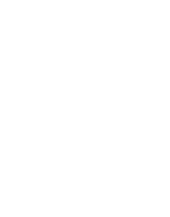
|
LALIQUE René, Veilleuse
Deux Paons - 1920
© Shuxiu Lin
Coll. S. Bandmann et R. Ooi
|
|
 |
BACK TO THE SOURCES - THE WORLD THAT INSPIRED LALIQUE
24/6/2017-5/11/2017
«Don’t ask me to explain what I hesitate myself to define. What are the principles that guide my work? Frankly, I have no idea», René Lalique confided to journalist Maximilien Gauthier. «An invincible attraction, the result of a perpetual process that is so effortless, it escapes me; I observe what I see, whether it be a woman, a child, a passer-by, a bird taking flight or a tree bathed in light, radiant in its element; then, all of a sudden, the harmony of a form, an attitude, a gesture or movement comes to the fore, remains in my mind’s eye, and combines with other elements of composition already present; once all this material has gravitated through my mind, the fruit is ripe, all that remains is for me to pick it».
|

|
Posted 26 June 2017
|
Share this:
|
|
While the observation of nature was essential nourishment for Lalique’s fertile imagination, the art critic Roger Marx insisted that the artist was «well aware of the discoveries of Egyptian, Greek and Etruscan archaeologists: the treasures of the Middle Ages and the Renaissance, the very specific creations of Byzantium, the Caucasus, the Far East, and even America, were all familiar to him; but while he no doubt drew substance from these examples, his method resembled that of the bees, which, in the words of Montaigne gather a little pollen here and a little there, producing honey that is neither thyme nor marjoram’. So what he borrowed from other sources was transformed and blended into something which became his own».
«Back to the Sources. The World that Inspired Lalique» takes the visitor on a journey to the sources that inspired René Lalique and his daughter, Suzanne, a multifaceted artist who brought a breath of modernity to Lalique creations in the 1920s. The exhibition provides a fresh perspective on the works of René and Suzanne Lalique and the sources that inspired them, and a new approach to the Lalique universe and imagination.
|
|
|
|
|
|
|
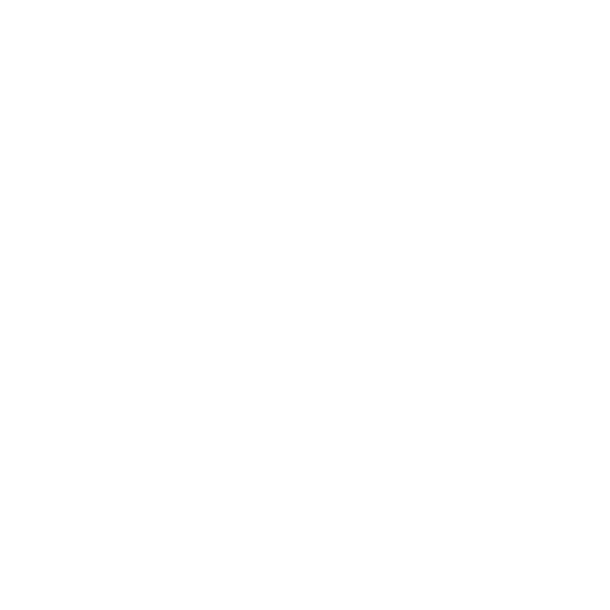
LALIQUE René, Flacons Sans Adieu
1929
© Studio Y. Langlois
Coll. Benjamin Gastaud
|
|
|
|
|
THE SUBTLETY AND POETRY OF THE ORIENT

|

|

|
The Land of the Rising Sun began to open up to the West in the second half of the 19th century, after almost two centuries of isolationism. The 1867 Universal Exposition revealed Japan to the Parisians, who were enchanted by the Japanese artists’ delicate and poetic representations of nature.
Japonism went on to become an important movement, encouraged by the appearance of Japanese etchings in major department stores such as Le Bon Marché and Le Printemps, and a number of exhibitions featuring Japanese art. The sensitive, evocative nature of the likes of Hokusai, Hiroshige and Utamaro symbolised phenomena such as movement, strength and emotions. Objects such as Japanese fans, combs, inros, sabre guards and silks were all desirable demonstrations of oriental taste and aesthetics. China, with its wonderful jades, also benefitted from the vogue for eastern refinement.
Intellectuals and artists such as the Goncourt brothers, Philippe Burty, Emile Guimet, Claude Monet and Edgar Degas developed a passion for collecting oriental art. Art Nouveau artists, interior decorators and artisans discovered the combination of sophistication and delicacy that characterised the art of the Far East. René Lalique and his daughter Suzanne were no exception to the trend, as seen by their compositions and the themes they cherished, from dragonflies and peacocks to cherry blossom and chrysanthemums. Their vision is both sharp and full of wonder, bringing nature very much to life.
|
|

LALIQUE René, Boîte Degas
1921
© Studio Y. Langlois
Coll. XXXX
|
|
|
|
|

|

|

|
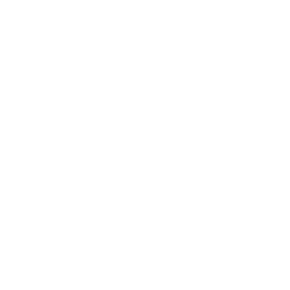
Deux paons (Two peacocks) night light
Designed in 1920
Mould-blown glass, pressed glass stopper, bakelite
Height: 44cm, width: 32.9cm
On loan from Shai Bandmann and Ronald Ooi
|
|
In the words of art critic Gustave Geffrey, «Animal life had no secrets for the Japanese artists’ eye (…) they mastered the representation of birds in flight and winged insects, but also the progression of the tiniest creature clinging to a blade of grass, the smallest visible fragment of the immense whole. The living poetry the Japanese artists have contributed with their vision of the animal world is indeed an unrivalled gift. (…) Congratulations, Mr René Lalique, for having understood this lesson.»
The peacock was a favourite among the animals Lalique chose to represent both in his jewellery and glass creations. A major symbol in Buddhist and Shintoist mythology and an emblematic animal for the Art Nouveau movement, Lalique chose the peacock for its majestic bearing and the fabulous design of its feathers. He used it to adorn jewellery, powder boxes and other decorative objects. The tail feathers of the two peacocks that crown this lamp are particularly striking, and the eyes in the feathers seem to glow.
|
|
|
|
|
|
|
EGYPT MANIA
EGYPT MANIA
French society had been fascinated by Ancient Egypt since Napoleon Bonaparte’s expedition. Its first function had evidently been military, but the expedition also enabled artists and academics to study and represent the vestiges of this ancient civilisation. The Louvre created a department of Egyptian antiquities in 1823; and the British Museum presented its own collection from its opening in 1753. It was no doubt in the renowned London museum that René Lalique first discovered this rich and inspiring iconography.
A number of his friends were also influential, in particular the painter Georges Clairin, who visited the land of the Pharaohs in 1895 and was enchanted by the «delightful life on the Nile». He sent Lalique sketches of hieroglyphs, and brought back cornelians, agates and other gems for his friend, hinting that: «You may find some ideas for Egyptian jewellery».
A few years later, in 1922, the British archaeologist Howard Carter discovered the tomb of Tutankhamen in the Valley of the Kings. The presentation of these extraordinary archaeological discoveries to the general public created an enormous wave of enthusiasm that affected all aspects of artistic production, including fashion, architecture, interior decoration, bookbinding and jewellery. The influence was still strong by the time Lalique ventured into the art of glass, with beetles and lotus flowers - sometimes geometricized or stylised - adorning perfume bottles, jewellery boxes and vases, in line with the tastes of the Art Deco movement.
|
|

|

|

|
Lalique Museum collection, acquired with the support of the Conseil Régional d’Alsace and the Département du Bas-Rhin Drawing was always important in René Lalique’s creations. He began winning prizes at an early age, and throughout his life he always kept a notebook in his pocket «that he would fill with figures and arabesques brimming over with life, along with reflections of all kinds, recipes, addresses of artisans, excerpts of poetry, etc.»
A tireless observer, with an eye for the finest details, he never sought to copy, imitate or stylise. He chose to transform reality into new creations, his profound knowledge of ancient art, perfect comprehension of nature and vivid imagination all contributing to the development of his own personal style.
This pendant project was clearly inspired by ancient Egypt, which Lalique discovered in museums and through the painter Georges Clairin. As a late 19th century artist, René Lalique explored the theme of the beetle, associated with Osiris and a symbol of resurrection, adorning it with opals and amethysts and enhancing it with enamel.
|
|
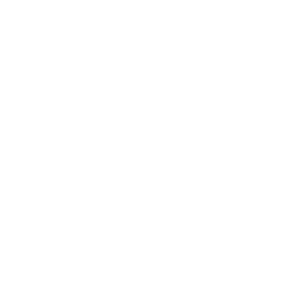
Preliminary drawing for an Egyptian pendant
Beetle with wings spread
Circa 1898
BFK paper, Indian ink, gouache, watercolour
Height: 22.5cm, width: 22cm
|
|
|
|
|
|
|
EXOTICISM IN VOGUE
From the end of the Middle Ages onwards, Europe opened up to the rest of the world, with expeditions to China, exploration of the African continent and the discovery of the New World. The quest for spices and gold provided the opportunity to bring back masks, jewellery and precious cloth. Exhibited in the cabinets of curiosities of Europe, and subsequently in its museums, these exhibits aroused wonder and admiration but also encouraged the myth of the gentle savage. The colonial pavilions of the Universal Expositions of the late 19th and early 20th centuries presented the arts and crafts of these countries, sometimes reconstituting whole villages where visitors could taste exotic cuisine and see demonstrations of traditional dance.
While this turn of the century trend produced the birth of ethnology, a number of intellectuals and artists discovered art nègre. Picasso, Braque and Matisse all collected masks and statuettes. Later on, the Surrealists were fascinated by the arts of Oceania and America. The exotic imagery and motifs were a huge inspiration for artists and interior decorators. Suzanne Lalique discovered Pre-Colombian art through the collection of Mexican and Peruvian pottery and basket work that her husband, Paul Burty Haviland, had brought back from the United States; and her brother-in-law, Frank Haviland, a painter close to the Cubists, introduced her to African art. She was particularly inspired by the geometrical motifs, which she frequently enhanced with black enamel. It was Suzanne who took the Maison Lalique resolutely into the era of Art Deco.
|
|

|

|

|
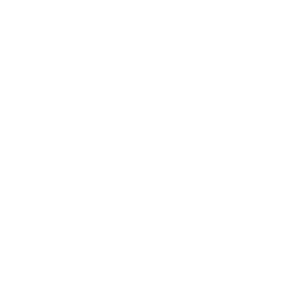
Volutes vase
Designed in 1926, based on a drawing by Suzanne Lalique-Haviland
Mould-blown glass, sand-etched
Height: 41cm, diameter: 40cm
On loan from Shai Bandmann and Ronald Ooi
|
|
Around 1910, René Lalique began to solicit the assistance of his daughter, Suzanne, recognising her considerable creativity and talent. The majority of her early works were perfume bottles, powder boxes and hand mirrors, but by the 1920s her modern influence grew to the extent of taking Lalique firmly into the era of Art Deco, with geometric and stylised forms marking her specific style.
In 1926, Suzanne designed a trial series of a dozen vases with a small-scale production. The Volutes vase - 41cm high, 40cm in diameter and weighing almost eight and a half kilos - is one of the series, and a real technical challenge. Volutes is a glass vase made with the free-blown technique, «lined» with brown enamel and sandetched with delicate volute motifs. The contrast between the vase’s weighty aspect and the rather hesitant delicacy of the motifs gives an impression of force and gentleness, a reflection of Suzanne’s personal qualities. It is all the more exceptional in that it is the only known example of the Volutes vase that has survived to this day.
|
|
|
|
|
|
|
ANTIQUE BEAUTIES
For centuries, Rome and Ancient Greece had stimulated man’s imagination, resulting in a form of treasure hunt through the end of the 18th and the entire 19th century, the aim being to fill the museums that were springing up all over Europe with works of classical Greek and Roman art.
The pillages of the Acropolis in Athens and other major archaeological sites were all part of this trend. A caryatid from the Erechtheion and elements of the frieze of the Parthenon ended up in the British Museum, while the Venus of Milo found its way into the Louvre collections.
This taste for Antique art was encouraged by the French Emperor’s acquisition in 1861 of the Campana collection, comprising objects uncovered from Etruscan, Greek and Roman digs, and the work of German archaeologist Schliemann on the ruins of Troy. From 1869, René Lalique’s work was also influenced by this trend, particularly after he became a master glassmaker.
Lalique gave mythological names to some of his creations. Amphitrite, Calypso and Daphne became perfume bottles and sculptures, while Terpsichore, the Danaides and the Bacchantes adorned vases. He studied the iconography illustrating the drape of linen chiton tunics and experimented with the effects of pleating. He represented female dancers, accentuating their sensuality through the play of transparency. Male bodies in movement, tense in strenuous effort, were also an inspiration. He reinterpreted the postures of wrestlers and other athletes, often in bas-relief.
|
|
|
|
THE MIDDELE AGES RIVISITED
Medieval art also clearly had an influence on René Lalique. He spent two years in London, in the homeland of John Ruskin and William Morris, whose watchwords were Arts and Crafts, Nature and the Middle Ages. His return to France in 1880 coincided with an exhibition devoted to Viollet-le-Duc, who had died the previous year at the Hôtel de Cluny.
A parallel can be drawn between René Lalique and the famous architect based on three factors. The importance of drawing was equally present in both men’s approach. For Violletle- Duc, drawing was «the best way of developing intelligence and judgement, as it teaches the eye to see, and seeing is knowing»; for René Lalique, preliminary drawings were an essential step in the creative process, both for jewellery and for his glass creations. The observation of plants, even the humblest of flowers, was a second feature they shared. For the architect, this taste for the study of plants began with his discovery of the «clever use the artists of the Middle Ages made (…) of flora for decorative elements», which was something equally important for Japanese artists. And finally, the two men shared the notion of «total art», whereby decoration was inherent in structure.
In addition to his interest in Greco-Roman Antiquity and the Middle Ages, René Lalique was fascinated by the work of the 16th century ornamentalists and gold and silversmiths. These multiple influences all combined to produce a fantastic bestiary of chimera, griffons and
sphinxes which, though inspired by ancient times, was nonetheless a reflection of Lalique’s era. In the words of the art critic Roger Marx: «Art, like History, always brings something new».
|
|

|

|

|
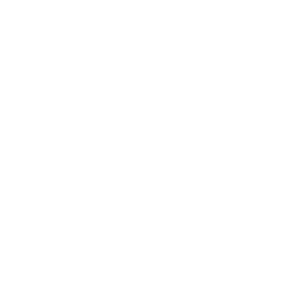
Mediaeval character pendant
Circa 1900-1902
Gold, ivory, enamel, glass
Height: 6.5cm, width: 5.2cm
Shai Bandmann and Ronald Ooi collection
|
|
Rose windows, other features of Gothic architecture, knights and monks, were among the elements of the Middle Ages that inspired Lalique. A number of his jewellery pieces - pendants and combs in particular - featured characters in haut-relief wearing hats or headdresses.
The choice of ivory for the character featured on this pendant was no doubt based on its qualities, both as a material that is easy to sculpt, but also because of its association with the history of Mediaeval art, when it was frequently used to make diptychs, boxes for holding relics, and as a form of «board» for book covers.
Enamelled gold enhances the vine leaves, giving a copper-coloured tone, while the grapes are made of glass. The diversity of the materials used by Lalique is proof that his renown as the «inventor of modern jewellery» - in the words of Emile Gallé - was due not only to his sources of inspiration, but also to his innovative use of new materials. In an era when master jewellers used precious metals and stones, Lalique dared to introduce less noble materials of less intrinsic value, when they fitted his artistic vision and project.
|
|
|
|
|
|
|
FROM DEGAS TO THE RUSSIAN BALLETS
Female figures are a recurrent feature in René Lalique’s creations, from the Neo-classical Antique representations to graceful young women with flowing locks; undines and mermaids from mythological sources are often represented dancing in voluptuous rings. A powder box entitled Degas is another reference to the world of dance, via the famous French artist, whose paintings and sculptures immortalised dancers rehearsing, performing and resting in the wings.
Edgar Degas was renowned for his ability to capture the dancers’ movement and for his studies of young ballet dancers with head upturned or looking down. Charles Garnier’s Paris Opera was inaugurated in 1875, but it was not until 34 years later that the Parisian public discovered Diaghilev’s Russian ballets, at the Théâtre du Châtelet. It was a revelation and source of inspiration for Suzanne Lalique, particularly the work of Leon Bakst, whose creations featured «bright gold and silver colours shimmering in the light». It was Fokine and Nijinski, of course, who revolutionised the history of modern dance with some of their choreographies, but the audacity of the decors and the costumes contributed to the anti-conformist spirit of the performance. Bakst designed the set and costumes for many famous ballets of the day, such as The Firebird and The Afternoon of a Faun. Taking his inspiration from the Orient, pre-revolutionary Russia and Ancient Greece, he also contributed to the revival of contemporary art, alongside artists such as Picasso, Cocteau and Chagall.
|
|

|

|

|

L’oiseau de feu (The Firebird) table centerpiece
Designed in 1922
Pressed glass, bronze patina
Dimensions, inclusive of stem: Height: 43cm, width 43.5cm, depth:
9.8cm
On loan from Shai Bandmann and Ronald Ooi
|
|
In 1909, Serge Diagilev, promoter of the Russian Ballets, commissioned the young composer Igor Stravinsky to write the music for a ballet in two scenes based on a Russian fairy tale. The Firebird premièred on 25 June 1910 with choreography by Michel Fokine and sumptuous costumes for the Princess and the Bird by Leon Bakst. Lalique no doubt had this ballet in mind when he produced this table centrepiece featuring a bird-woman with chest proudly raised and feathers spread wide. The bronze base has a red filter that makes it look as if the bird is literally on fire when it is lit up.
Over and above the aesthetic value of such pieces, they were also destined to be recipients for food. Lalique designed a new concept, turning them into exceptional lighting elements. He produced no more than ten models, using glass and a metallic base (bronze, silver or nickel-plated metal).
|
|
|
|
|
|
|
THE NEW YORK SKYLINE
René Lalique went to the United States in 1904 to visit the Universal Exposition in St. Louis. The short time he spent in New York was taken up with business, and we know nothing of his feelings about the city, or whether he agreed with his wife Alice when she wrote to Suzanne that it was «decidedly ugly».
Paul Burty Haviland, who was to become René’s son-in-law in 1917, lived in New York from 1902 to 1916, where he ran the American affairs of Haviland and Co. Leading the life of a dandy, he frequented the theatrical world and took a lively interest in the art scene, a regular visitor to Galerie 291, the showcase of the avant-garde movement. After meeting the leader of the American pictorialist movement, Alfred Stieglitz, he became a fervent photographer.
Amongst other subjects, he produced a series of images entitled New York at Night.
While he never returned to New York after his marriage, he most probably shared his experiences of the art world with Suzanne and gave her a description of the city, which had become a symbol of modernity, with its famous skyline that enchanted passengers of the Transatlantic liners.
The silhouette of New York’s skyscrapers clearly inspired certain works dating from the 1920s.
From the volutes of the Art Nouveau movement to the sobriety of Art Deco, René Lalique was always in tune with the times. Encouraged by the creativity of his daughter, he had the courage and also the talent to adapt his inspiration to the new trends, without forgoing anything of his own personality.
|
|

|

|

|
Renowned for his avant-garde vision as a jeweller, Lalique used glass for many of his jewellery creations at the turn of the 20th century. Around 1908-1909, the great perfumers of the era commissioned him to design perfume bottles and powder boxes bearing symbols or messages relating to their precious content. Lucien Lelong, heir to a famous couture house, established a perfumery business in 1924. He opened stores in Chicago and New York in 1928 and 1929, and turned to René Lalique to design a bottle destined to charm his chic and fashionable clientele residing in the skyscrapers the other side of the Atlantic.
This square, frosted glass bottle has a cube-shaped stopper and is decorated with black enamel festoons. It comes in an enameled aluminium box and is part of a set featuring some twenty items including powder boxes, combs, brushes, hand mirrors, etc.
|
|
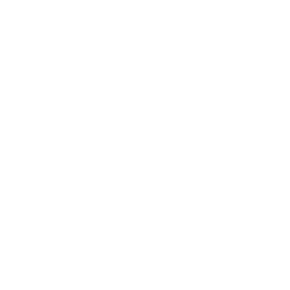
Bottle for Lucien Lelong
1929
Mould-blown, enamelled glass, enamelled pressed glass stopper, enamelled
aluminium box
Height: 12cm, width: 4cm (box)
Height: 10cm, width: 3cm (bottle)
Benjamin Gastaud collection
|
|
|
|
|

|

|

|

|
|
Partners of the museum
Le musée Lalique a été inauguré le 1er juillet 2011. Il est géré par le Syndicat mixte du Musée Lalique, structure créée le 1er janvier 2008 qui comprend la Région Alsace-Chmpagne- Ardenne-Lorraine, le Conseil départemental du Bas-Rhin, la Communauté de Communes du Pays de La Petite Pierre et la Commune de Wingen-sur- Moder.
Les membres du Syndicat mixte du Musée Lalique ont assuré le financement de la construction avec une contribution forte de l’État et de l’Union européenne. Bénéficiant du label Pôle d’Excellence Rurale et de l’inscription au Contrat de Projet 2007-2013 (volet territorial et convention Massif des Vosges - fonds national d’aménagement et de développement du territoire), le musée s’est également vu attribuer l’appellation Musée de France.
LENDERS AND EXHIBITION PARTNERS
Le commissariat de l’exposition Retour aux sources - Quand Lalique s’inspire du monde est assuré par : Véronique Brumm, directeur du musée Lalique
This exhibition would not have been possible without the support of numerous lenders, museums, public institutions and collectors. Nancy Museum of Fine Arts is a special partner to this exhibition with numerous loans from the Charles Cartier-Bresson collection.
Museums and institutions
• Musée des Beaux-Arts de Nancy
• Musée archéologique de Strasbourg
• Musée zoologique, Strasbourg
• Musée de minéralogie, Strasbourg
• Musée d’ethnographie, Colmar
• Musée d’impression sur étoffe, Mulhouse
• Médiathèque Malraux, Strasbourg
• Maison Saint-Florent, Saverne
Private collections
• Shai Bandmann et Ronald Ooi
• Benjamin Gastaud
• John Nemeth
Company
• Société Lalique
NANCY MUSEUM OF FINE ARTS
Founded in 1793, the Museum of Fine Arts enjoys a highly privileged position in Nancy, located on Place Stanislas, between the historic centre and the modern area of the city. It is Nancy’s oldest museum, and houses two other important museums, the Musée Lorrain – Palais des ducs de Lorraine, and the Musée de l’Ecole de Nancy. The Musée des Beaux-Arts tells the history of the city’s architecture and urban development.
In the basement area, the remains of fortifications dating from the 15th to 17th century take visitors into the heart of the history of the former Duchy of Lorraine. The 18th century pavilion that houses the main entrance is part of the architectural ensemble designed in 1755 by Emmanuel Héré, ranked in 1983 as a UNESCO World Heritage Site.
The museum has never ceased to expand and enrich its collections, showcasing painting, sculpture and graphic arts from the 14TH century to the present day. It also has a remarkable collection of Daum glassware, a fine range of Far Eastern art comprising pieces from the Charles Cartier-Bresson collection and a wide range of works by Jean Prouvé.
With its Musée de France status, the museum goes beyond the regional and national dimensions, covering the major artistic movements on a European scale. Its collections reveal the multiple cultural influences that have given Nancy a window onto the world.
Major landmarks in the museum’s history:
1793: the first collection - comprising pieces confiscated during the Revolution - is deposited in the Chapelle de la Visitation.
1801: the Chaptal decree names the museum as one of fifteen in the French provinces qualified to receive items from the Louvre.
1814: the museum moves to the Royal College of Medicine and Surgery pavilion designed by the architect Emmanuel Héré, on Place Stanislas. Fifteen years later, in 1829, the museum moves to the Hôtel de Ville, where it occupies several rooms, before returning to Place Stanislas in 1936.
1936: a first extension is built by the André brothers, sons of the renowned Ecole de Nancy architect Emile André.
1999: a tender put out by the city of Nancy for the construction of a new extension is won by a team of local architects headed up by Laurent Beaudouin; the team includes Jean-Luc and Eric André, Emmanuelle Beaudouin, Sylvain Giacomazzi and Claude Prouvé.
2011: Luca Lotti is commissioned to carry out improvements to the museum’s lighting and accessibility. A new room is devoted exclusively to the internationally
CHARLES CARTIER-BRESSON COLLECTION
Charles Cartier-Bresson (1852-1921) was the great uncle of the famous photographer Henri Cartier-Bresson, born in Paris in 1852 into a family of textile manufacturers. He was sent to the Vosges region in 1872 to manage the sewing thread factory at Celles-sur-Plaine, and later moved to Nancy, in 1892.
Cartier-Bresson started his collection in 1889, no doubt encouraged by his brother-in-law Paul Brenot, a seasoned collector who frequented Parisian circles interested in Japanese art and culture. He purchased a majority of pieces from specialist merchants such as Siegfried Bing and Antoine de la Narde but also attended public auctions, including events organized by Philippe Burty and Edmond de Goncourt.
Cartier-Bresson meticulously recorded all his purchases in a notebook, adding new acquisitions throughout his lifetime. By the time of his death he had amassed over 1,700 objects, mainly from Japan but also from China, Tibet and the ancient kingdom of Siam.
The collection included prints by Japanese artists from the late 18th and 19th centuries (Utamaro, Hokusai and Hiroshige), painted scrolls, screens, lacquer artworks, ceramics, sculptures, masks, kimonos, finery, sabres, and a suit of Samurai armour. Some of the objects are related to everyday life, others are ceremonial or military, but they are all examples of symbolic imagery delicately represented on a whole range of articles. Together, they reflect a highly refined culture, relating to aspect of ancestral customs, religion, theatre and poetry.
Cartier-Bresson showed much of his collection in one of the salons of his mansion in the rue de la Ravinelle in Nancy. This is also where he had his portrait painted, by the painter Jean-Mathias Schiff, who was a friend of Cartier-Bresson’s and the curator of the Musée de Nancy.
Cartier-Bresson was anxious that such precious objects should not be dispersed, and left part of the collection in his will to Nancy’s Musée des Beaux Arts. In 1936, over 1,100 choice pieces of Far Eastern art were presented to the museum.
After just a few years on show, shortly before the outbreak of the Second World War the objects were put into storage for safekeeping. In 2011, visitors were finally able to rediscover one of the finest collections of Japanese art in the east of France, thanks to an exhibition entitled Un goût d’Extrême-Orient. Collection Charles Cartier-Bresson.
|
|
|
|
|

|

|

|

Musée Lalique presentation
|
|
THE LALIQUE MUSEUM
Créé dans le village alsacien où René Lalique a implanté sa verrerie en 1921, le muse permet de découvrir la création Lalique dans toute sa diversité, dans un écrin architectural aménagé par Wilmotte.
Bijoux, dessins, flacons de parfums, objets issus des arts de la table, lustres, bouchons de radiateur, statuettes ou encore vases... Le musée Lalique présente plus de 650 oeuvres créées par René Lalique et ses successeurs. De la joaillerie au cristal actuel en passant par le verre, c’est un univers de lumière et de transparence qui est présenté.
Par des photographies grand format et des vidéos, le visiteur est transporté dans d’autres ambiances : foisonnante pour l’Exposition universelle de 1900, apaisante pour les chapelles
décorées par René Lalique ou encore magique avec le ballet des verriers de la manufacture.
|
|
|
|
|
|
|
|
|
|


